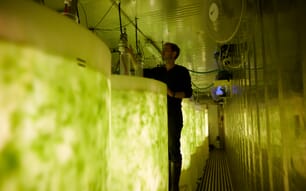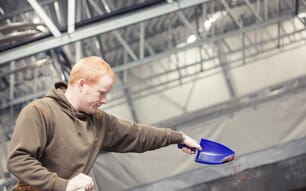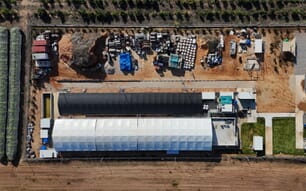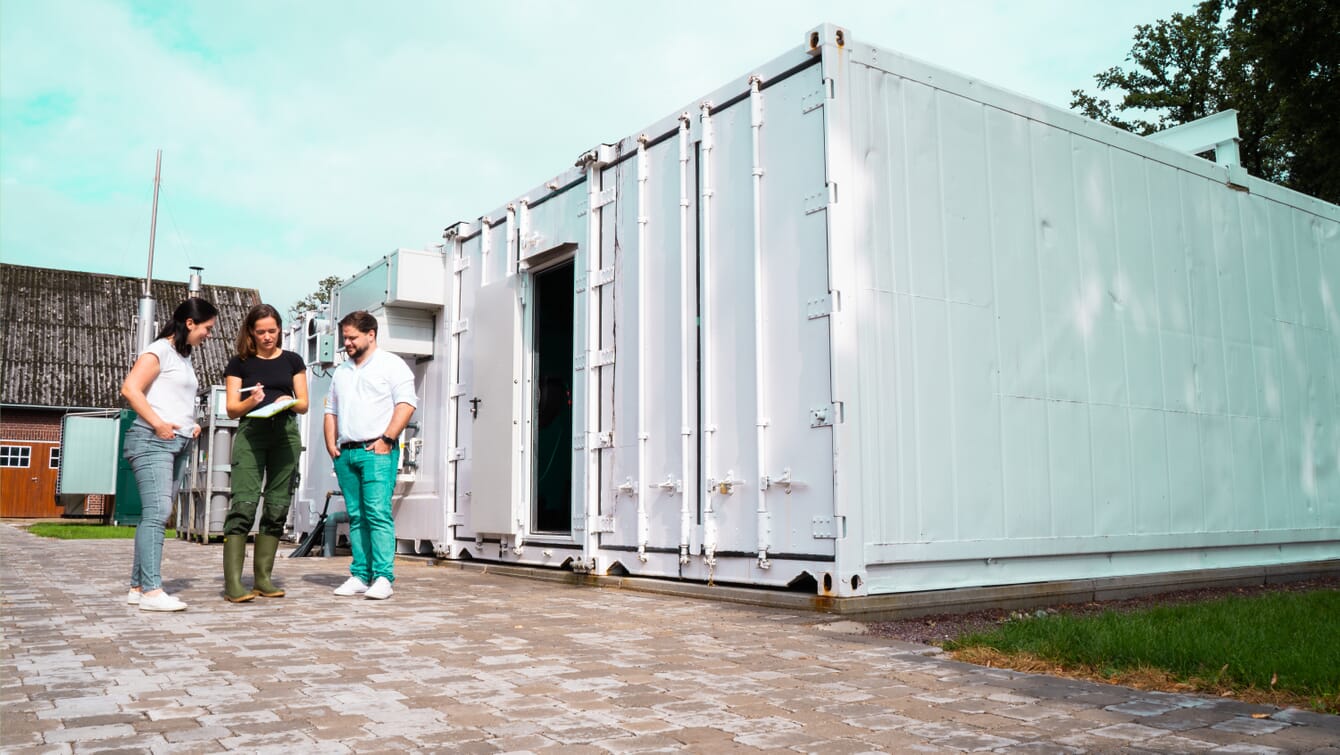
The design of Seawater Cubes' RAS facility is based around assembling four shipping containers to form a 120-square-metre farming unit – currently costing €350,000 to buy – with a pilot site suggesting that each unit is capable of annually producing 7.8 tonnes of fish © Seawater Cubes
The German startup was co-founded by two former engineers from Europe’s first large-scale RAS – Meeresfischzucht Völklingen (currently called The Infinite Sea Company) – Kai Wagner and Christian Steinbach, alongside business administration specialist Carolin Ackermann. The trio believed that they could design a more efficient and affordable RAS design and they proceeded to draw up a business plan sufficiently impressive to secure €1.5 million in funding from the German Ministry of Economics.
“We thought about how to do RAS better and developed the idea of a decentralised, small-scale approach for on-land fish farming and built a prototype of the idea,” Ackermann – who is also CEO of the company – recalls.
The design is based around assembling four shipping containers to form a 120 m2 farming unit and operations at the pilot site suggest that each unit is capable of annually producing 7.8 tonnes of fish.
It’s an impressive volume to come from such a tiny footprint.
“We’ve achieved a 98 percent survival rate because of the water quality – which can be kept optimal by a combination of our filtration system and the software that we use. It also helps that we keep the stocking densities below their maximum limits – for sea bass, for example, we suggest stocking at around 30 percent below the 100 kilo per cubic metres that some scientific papers suggest is possible,” Ackermann notes.

© Seawater Cubes
Unlike conventional RAS facilities, which usually consist of a series of round tanks, Seawater Cubes’ design is for a single, L-shaped tank per unit. This tank is divided into three sections, through which each cohort of fish progress as they grow. Within nine months, according to Ackermann, customers should be in a position to harvest on a regular basis. Producers should be able to raise fish to market size (ie 450 g) within a year.
Key components to the system, Ackermann explains, include a biofilter system based around a unique denitrification technique, which allows up to 99 percent of the water to be recycled and software which automates the vast majority of operational requirements. Both have been developed in-house and help to make the system widely accessible, even for those with no aquaculture experience. And the company also helps to prepare customers for how to operate the systems – running courses, that include online elements and a one-week hands-on element at the company’s own pilot farm.
While the course is currently only in German, Ackermann notes that it will also be offered in English from next year.
In terms of the species suited to the design, the company has had successful trialled growing sea bass and sea bream, but are also conducting trials on growing red drum, barramundi and pompano. Despite the emphasis on marine species, these can produced far from the coast, by the simple addition of salt to mains water.
“We’re concentrating on marine species because they achieve higher prices and because consumers are familiar with them,” Ackermann explains.
She adds that she believes that it’s possible to produce a better quality version of these species in the Seawater Cubes than most of those fish that are produced in conventional cage farms.
“We compare with organic standards and we see that organic seabass and sea bream are less available now. While EU regulations mean that fish produced in RAS can’t achieve organic certification at the moment, we are convinced that the regulations will change,” Akermann explains.
In the meantime she suggests that producers using the system should focus on marketing the local provenance of their fish, as they are likely to sell most of their fish directly to local consumers and restaurants.
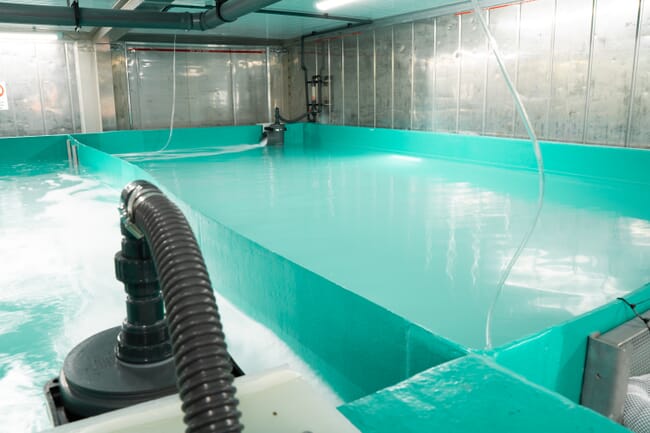
Unlike conventional RAS facilities, which tend to consist of a series of round tanks, Seawater Cubes’ design is for a single, L-shaped tank per unit, which is divided into three sections, through which each cohort of fish progress as they grow © Seawater Cubes
A low cost option
Each unit currently costs €350,000 to buy – a fraction of the price that even modest RAS facilities are costing to build.
“Our approach is not to make it big from the beginning but to start small and scale up by adding extra systems once they have been proven to work. We’re not going with the kind of large investor-financed projects that have all to often failed,” Ackermann reflects.
She also points out that – for customers in the EU – funding to help subsidise such projects is available from the European Maritime, Fisheries and Aquaculture Fund (EMFAF). And she adds that Seawater Cubes helps support its customers to fill in the necessary documents to apply.
As well as the reduced cost, Ackermann observes that having a smaller system helps to streamline the permitting process.
“Customers [in Germany] need a building permit, but don’t need a licence for discharging the water, as it’s only a small quantity – around 500 litres per day. This means it can be discharged into the municipal waster water system – which is what we do – but one of our customers uses the waste water in their biogas plant. We’ve also seen a lot of interest from potential customers to couple fish farming with aquaponics – to use the waste water to grow saltwater-tolerant plants like Salicornia,” she explains.
In terms of energy consumption – which is the source of one of the biggest costs, and most adverse environmental impacts for many RAS operators – Ackermann says that each unit requires 60,000 kWh per year to run.
This figure is kept comparatively low, she says, thanks to the automation of so many of the systems, which supports high levels of energy efficiency.
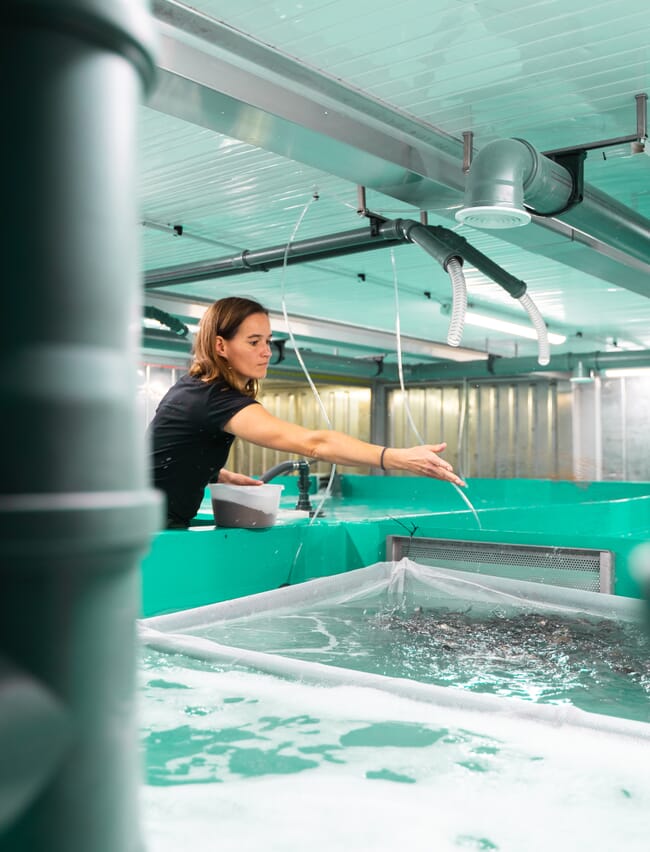
According to Akermann, human-powered operations in the RAS unit require about eight hours a week, which is mainly control work, looking at the fish, looking at the data, cleaning things, and refilling the feeders © Seawater Cubes
Despite the widespread automation, the system does, of course, require an element of human intervention, but they could still be run as a sideline.
“The daily operation requires about eight hours a week. This is mainly control work, looking at the fish, looking at the data, cleaning things, refilling the feeders. On top of that is the time needed for processing the fish after harvest. The time for this will vary, depending on whether the fish are gutted or filleted for example, but it is also – on average – about 8 hours a week,” Akermann explains.
As a result, the company is promoting it as business that can run alongside established industries and Akermann suggests that it’s perfect for terrestrial farmers who are looking to diversify from staples such as poultry or pork production.
Indeed, one of he company’s first two customers is a pig producer, while the other is a new company formed by engineers, which aims to increase urban food production. Both bought their units this year.
Key milestones
As well as selling their first two units and showing that their technology functions effectively in their own farm, the startup’s key milestones have included their fundraise and a proof-of-concept which demonstrated that their own fish could be sold at the desired price in their hometown of Saarbrücken – with customers willing to pay €30 per kg for locally-sourced sea bass, compared to €20 per kg for seabass from a net cage in the Mediterranean. They have also found a local partner who is able to install the necessary technology within the cubes, as well as set the units up at their customers’ sites.
“As we are researchers, we want to focus on research and leave the manufacturing to our partner. We see there’s potential to reduce energy consumption, improve water quality and utilise AI in our systems,” Ackermann reflects.
Remaining challenges and goals
Ackermann is quite content that their technology is fit for purpose, but is sure that improvements can be made elsewhere in the business.
“We don’t have any real challenges with the technology but we do have challenges in areas like ensuring regular sales during an economic crisis and in dealing with the increased price of producing our systems over the last two years. We are looking to bring the technology from a kind of project status to serious manufacturing, which would help to reduce prices,” she reflects.

In the first two weeks the fingerlings live in a separate net before being introduced into the basin © Seawater Cubes
The startup is also looking to raise an additional €3 million to help to achieve this, as well as to grow the team, which currently consists of 12 people.
“We need further support, mainly in sales, but also in service – we have to put a lot of effort into servicing our customers, as we not only do a technical service after selling the cubes but also supply our customers with the raw materials – such as fingerlings, feed and spare parts – that they need. We also help them to build their own fish sales,” Ackermann explains.
“It necessary to help those customers who are new to aquaculture. And it’s also important to avoid what has happened to a lot of RAS farms in Germany, which went bankrupt because the providers installed the systems then left the operators alone. We are trying to do things differently,” she adds.
As Ackermann reflects, the more successful their customers, the better it will serve the startup’s plans to expand.
“Within five years we want to have customers right across Europe. While, in terms of technology, we want to be as energy and resource efficient as possible. We are also looking to build the whole value chain around the system, and launch an online shop where the people who have bought our cubes can buy everything they need, such as spare parts,” she concludes.

